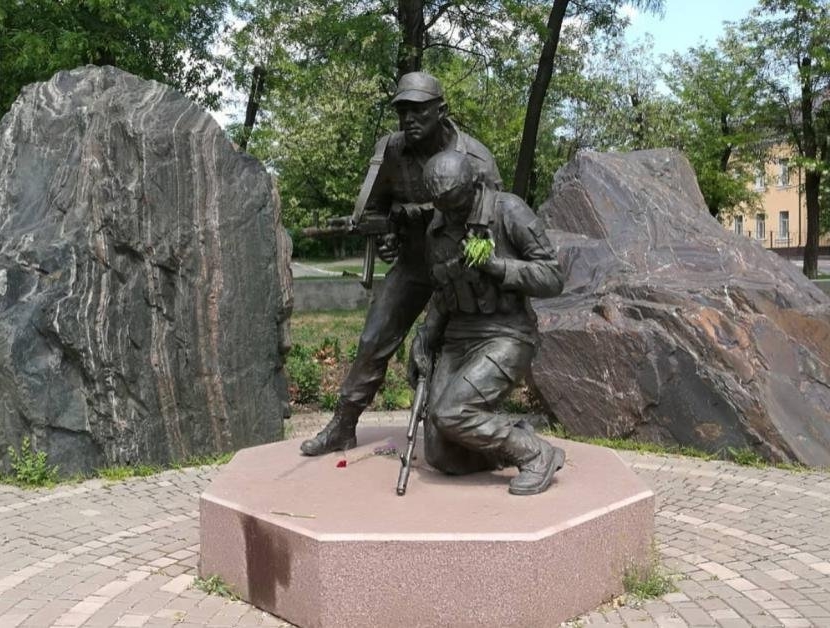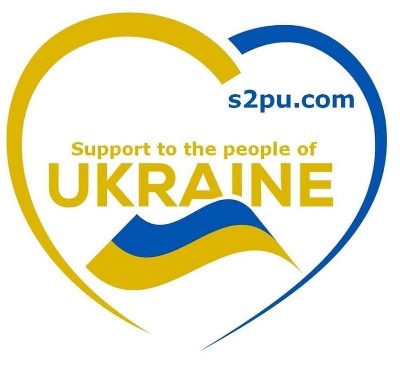
Monument from the hometown of President Volodymyr Zelinsky, Kryvyi Rih
Photo: Per-Kaare Holdal
It is important to care about history and to care about the future. If you are aware of your own history, you have a better chance of building a better future.
In November 2020, we in Support to the people of Ukraine organized a webinar entitled "Learning from history for a better future". In this webinar, some important information emerged about Russia's policy over many years, which is based only on violence, terror and lies. After this, we have written several letters to the norwegian Storting and the Government without noticeable reactions.
On February 24 this year, Russia brutally invaded Ukraine, creating a humanitarian and refugee crisis, and plunging the world into entirely new economic and geopolitical uncertainty, just as we were beginning to recover from the worst pandemic in a century.
But the Russian attack on Ukraine started in 2014. Western countries including Norway slept in the hour until February 2022. What the Russian propaganda tells its people is that NATO is attacking and encircling Russia through Ukraine, threatening to wipe out Russia. Then you have to defend yourself by all means.
While the impact of the war, which is still raging, has been felt around the world, many of us know little about Ukraine itself.
Ukraine's history is characterized by the fact that the lands that make up Ukraine today have throughout history been populated by many ethnic groups. From the 8th century, Ukraine was a core area for the Eastern Slavs. The first East Slavic state formation, the Kingdom of Kyiv, was founded in the 880s. The work on Ukraine as a nation goes back to at least the 17th century. And one can talk about the history of Ukraine which is much older than that. The Ukrainian national movement comes from the 19th century and really it was a fairly typical European national movement - anti-imperial, focused on the people as the subjects of history.
After the Bolshevik Revolution in November 1917, the Ukrainian government declared independence. None of Ukraine's demands were recognized by the powers that won the First World War. Josef Stalin's large-scale plans for modernization through industrialization and collectivization had far-reaching consequences for Ukraine. In 1932-1933 between 5-7 million Ukrainians starved to death. In Ukrainian it is referred to as "Holodomor". The Soviet authorities tried to keep the famine disaster hidden. The Holodomor is recognized as genocide in large parts of the world, but not in Norway.
Adolf Hitler considered Ukraine a fertile territory that could turn Germany into a world power. Dominion of the Black Earth was what he wanted to achieve. Hitler's attack on the Soviet Union began in Ukraine, at the large city of Lviv in western Ukraine. Many Ukrainians in the West first perceived the Nazis as "liberators". It was because Stalin had moved into what was the eastern part of Poland two years earlier, when Hitler and Stalin divided the country between them, and World War II started in 1939. But Hitler's soldiers did not come as liberators from Stalin's tyranny. They came as occupiers to colonize Ukraine's fertile soil, as mentioned, and turn the Slavic Ukrainians into a slave population for Aryan landowners and veterans, who would eventually receive Ukrainian farmland as spoils of war. Ukraine's material and human losses during World War II were enormous. Estimates of the number of civilian casualties vary from 5 to 7 million people in total. It is estimated that 2.7 million of the soldiers who fell in the Red Army were ethnic Ukrainians.
Ukraine has been an independent state since 1991.

The capital of Ukraine, Kyiv, is a bilingual capital, which is unusual in Europe and unthinkable in Russia. Most of us thought that bilingualism must divide people into two groups. "Ethnic Ukrainians" had to be a group that behaved in one way, "ethnic Russians" in another. After the Maidan revolution in January/February 2014, fabricated stories appeared about Ukrainian atrocities in Crimea and eastern Ukraine. Russian military intelligence created fictitious people online to spread these reports. A group of Internet trolls in St. Petersburg known as the Internet Research Agency worked hard to spread confusion among Ukrainians and in international opinion. This had now become a hallmark of Russia's foreign policy.
On February 24, 2014, about 10,000 Russian special forces, in uniform but without insignia, began an invasion of Ukraine. Kyiv was "taken to bed" at a time when the line of command was unclear and one was mostly concerned with avoiding more violence. The Ukrainian soldiers in Crimea were told not to resist. On the evening of February 26, Russian soldiers had taken the regional parliament building in Simferopol and raised the Russian flag. On 28 February, the Russian Parliament decided that Ukrainian territory should be incorporated into the Russian Federation.
In advance, a number of agreements had been concluded between independent Ukraine and independent Russia. One of these agreements was the 1994 Budapest Memorandum, in which the Russian Federation (along with the United Kingdom and the United States) guaranteed Ukraine's borders when Ukraine agreed to give up all of its nuclear weapons. In what was perhaps the largest nuclear disarmament effort in history, Ukraine handed over some 1,300 intercontinental ballistic missiles. What does this say about Russia's credibility in international agreements?
On 14 March 2014, when the Russians killed a Ukrainian in Donetsk (Eastern Ukraine), according to Foreign Minister Lavrov, this justified Russia's intervention and reserved the right to defend the Russians in Eastern Ukraine. Later, Putin promised to use "the entire arsenal" to protect his countrymen. Thus, they tried to refer to everyone who spoke Russian as compatriots. They tried to divide the population by language, the bilingual ones that had remained since Stalin's Russification began. In the midst of the Russian accusations in 2014, it was tempting to believe that the Maidan revolution was "a right-wing coup." But the real coup started in Russia in 2011 and 2012, when Putin regained the presidency with a parliamentary majority that contradicted the country's laws.
The acting Ukrainian president and members of the Provisional Government were by no means right-wing Ukrainian nationalists, but mostly Russian-speaking Eastern Ukrainians. The speaker of the parliament, who was elected to act as president, was a Baptist priest from southeastern Ukraine. During the transition period, the ministries of defense, internal affairs, and security were taken over by Russian speakers. The acting defense minister had origins in the Roma people. The interior minister was half-Armenian and half-Russian by family. One of the two deputy prime ministers was Jewish. Then new elections were called on 25 May 2014, which were won by the centrist Russian-speaking Petro Poroshenko. The only thing reminiscent of a coup d'état was Russia's attempt to hack the election committee in Ukraine to declare that a far-right politician had won, and in addition, this was announced on Russian television. In the Ukrainian elections, 2 politicians from the extreme right-wing did indeed stand as presidential candidates in Ukraine but received less than 1 - one percent of the vote each. The winner, Poroshenko, called for parliamentary elections to be held in September. None of the three right-wing parties in Ukraine received more than 5 percent in total.
This is reminiscent of a democratic process and that is what Putin fears most. It is a war between autocracy and democracy.
It matters whether young people take to the streets to defend the future or come in tanks to suppress it.
Source: Timothy Snyder, Professor of History

Comments powered by CComment